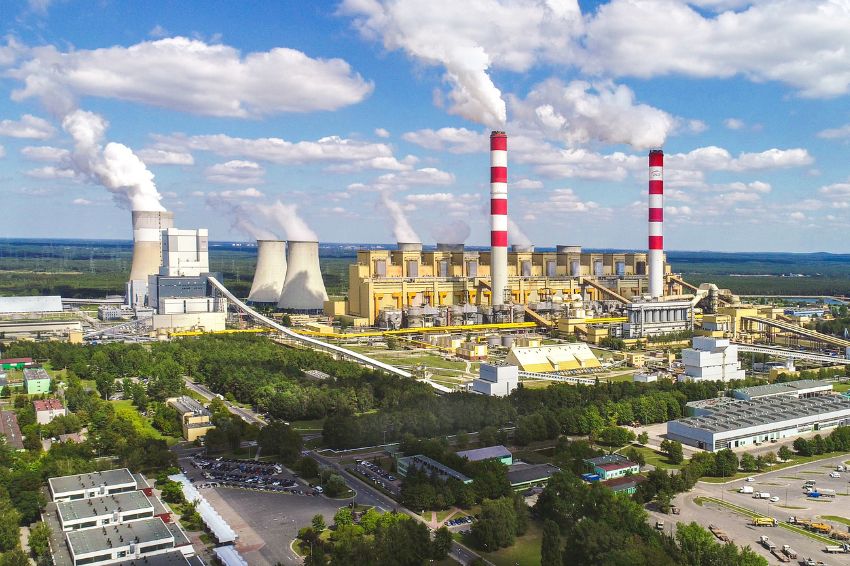According to a report from the research group of BNEF (BloombergNEF), the largest coal-fired power plant in Europe can replace most of its lignite generation with renewable energy, combined with batteries or low thermal capacity carbon.
This transition, according to the company, would reduce overall power system costs in the Łódź region of Poland, where the plant is located, maintaining critical energy security.
The Belchatow power station today plays a vital role in the Central European energy grid and is the sixth largest coal-fired plant in the world.
It was discovered by BNEF that the implementation of 11 GW of wind and solar energy in the region to replace 80% of coal generation from Belchatow is possible from a land use point of view.
Alternatively, they pointed out that around 6 GW of wind and photovoltaic power combined with a gas, biomass or energy-from-waste plant could achieve similar output.
Lignite resources will be exhausted
Local lignite resources at Belchatow are likely to be exhausted by 2036, forcing the plant to close, the research said. War and an energy crisis have boosted recent demand for coal, but the long-term outlook for coal and lignite plants in Europe remains “bleak.”
Lignite generation falls by 75% compared to 2021-2030 in Poland, even under sustained high gas prices, study finds. Belchatow provides a fifth of Poland's electricity and is at the heart of the country's energy system and energy security. “The successful transition of the Belchatow coal plant can serve as an example for coal regions around the world.”
Importance of renewables
“As the effects of climate change worsen, Europe’s energy crisis and Russia’s invasion of Ukraine only underscore the urgent need for countries to switch to clean energy and reduce their dependence on fossil fuels,” said envoy Michael R. Bloomberg. special from the UN Secretary-General on Ambition and Climate Solutions and founder of Bloomberg LP and Bloomberg Philanthropies.
“This new report shows a promising path to replacing Europe’s largest coal-fired power station with alternative, resilient clean energy sources – and could serve as an example for coal regions across Europe and the world looking to reap the health and economic benefits of the renewable source”, he said.
For Joanna Maćkowiak-Pandera, CEO of Forum Energii, the construction of new low-emission sources in the Bełchatów region should be started as soon as possible to maintain the security of energy supply at a high level and reduce electricity prices.
“Lignite resources in Belchatow are time-limited and will soon be exhausted. This report proposes options to replace generation with clean capacity that will guarantee Poland's security of supply”, he highlighted.
Felicia Aminoff, energy transition analyst at BNEF and main author of the report, reported that there are significant opportunities for renewable investments in the Łódź region.
“Belchatow could co-locate wind and solar energy by repurposing existing grid infrastructure. BloombergNEF analyzed historical weather patterns and found that both sources in the region generally generate at different times, complementing each other,” he explained.
BNEF also found that little new generation capacity is currently planned for the Łódź region. The 600 MW solar and 100 MW wind projects announced by Belchatow owner PGE would replace just 4% of the plant's lignite generation in 2021.
“The current lack of transition plans to replace lignite puts Poland's energy security at risk and could result in valuable grid infrastructure around Belchatow being tied up,” commented Felicia.
Alternatives for replacing lignite
BNEF's analysis presented several alternatives to replace the decline in lignite generation at Belchatow alongside wind and solar photovoltaics, including thermal plants such as gas, biomass or waste-to-energy.
However, fuel availability and price have limited the viable size of thermal plants. While Poland is expanding its liquefied natural gas import capacity to make up for lost imports from Russia, securing investment for a new gas pipeline to Belchatow could be challenging in the current market environment.
It is unlikely, in the company's view, that nuclear power will replace lost lignite generation in time, as new capacity often takes more than 10 years to plan and build.
Concrete plans to prepare for Belchatow's retirement and accelerate the deployment of new low-carbon capacity could open the door for the plant to benefit from EU transition funding.
“Poland has the potential to receive around 3.5 billion euros to support the transition of five of its coal regions by 2030. These funds could help the Łódź region with targeted redevelopment efforts and new economic development opportunities, and reduce the impact of job losses after lignite mining and generation losses,” the research pointed out.
“New clean electricity projects can boost the local economy and allow the region to continue playing a key role in Polish energy production and the country’s economy,” they concluded.

















